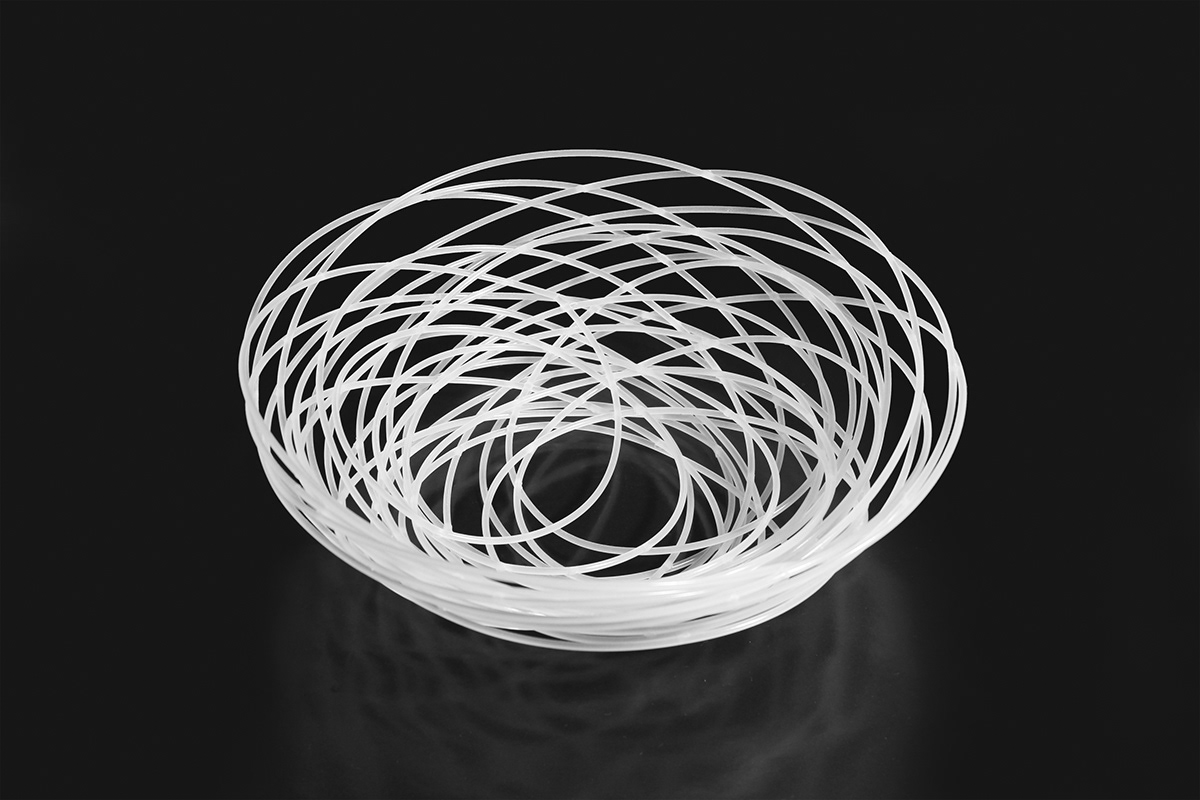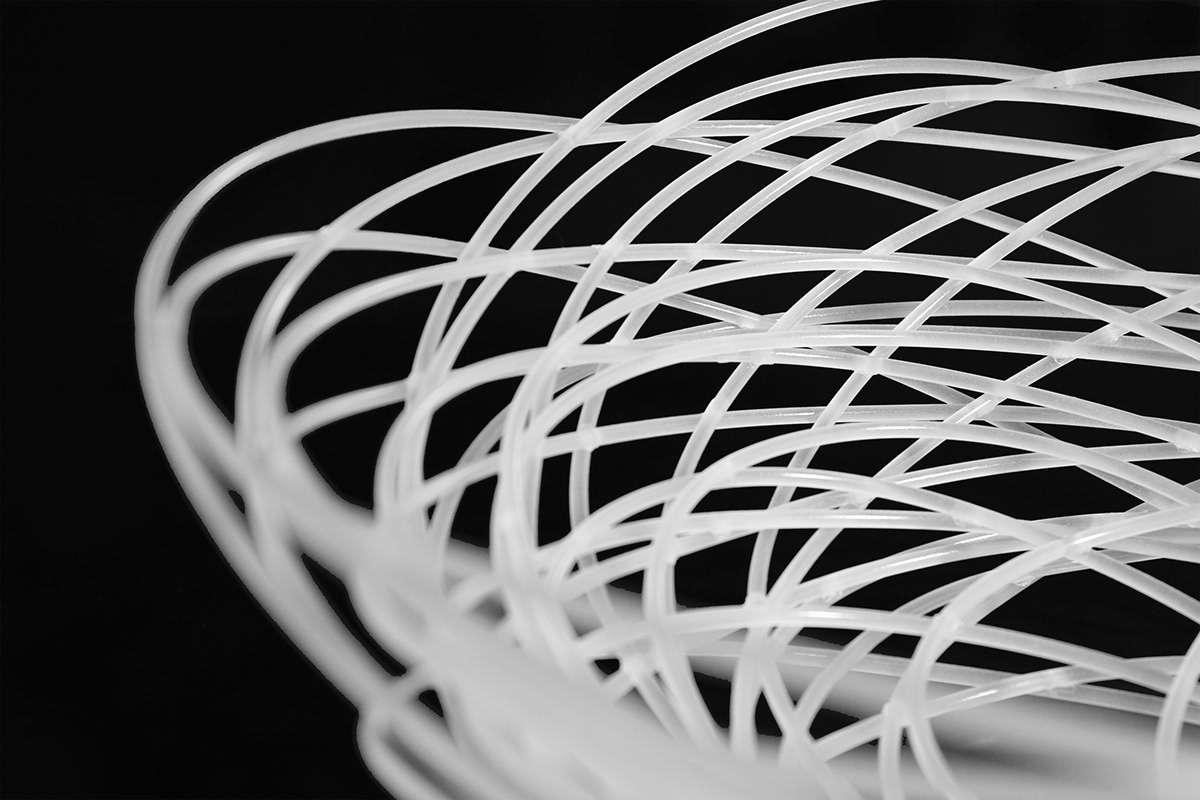Orbit Bowl, 2019
Heat-fused photoluminescent filament

Scientists at NASA’s Kennedy Space Center have been experimenting with how to grow and preserve fruit and vegetables in simulated space environments. Those include the microgravity environment of the International Space Station (ISS) and worlds with less gravity than Earth, like the Moon and Mars. Aboard the ISS, the in-orbit shelf life for most fresh fruit and vegetable items is only two to three days.¹

Commentary: Inspired by the space industry's current research into food preservation in space, pictured below is the first prototype for Orbit Bowl - a container for fresh produce here on Earth. Made of 'orbiting' photoluminescent filament, its layered structure maximizes food preservation by allowing air to circulate around and below fresh produce while allowing ethylene (the gas naturally emitted from fruit) to readily escape - slowing ripening and ultimately reducing food waste. By day, Orbit Bowl ‘harvests’ the sun's ultraviolet light and by night, glows a planetary blue.






© 2019 atelier Christophe Du Chemin


